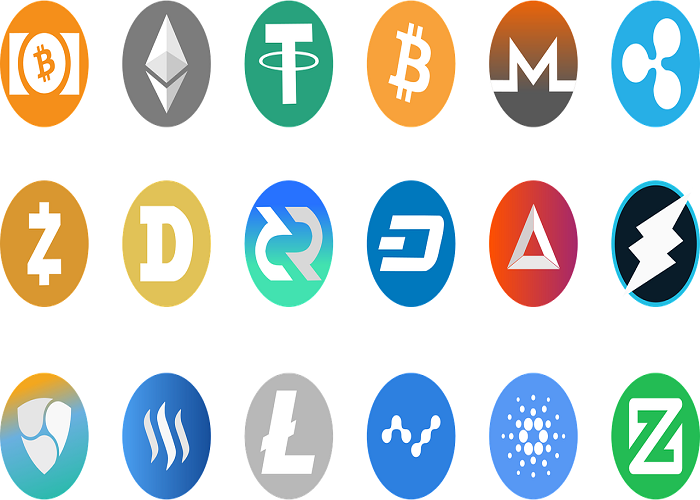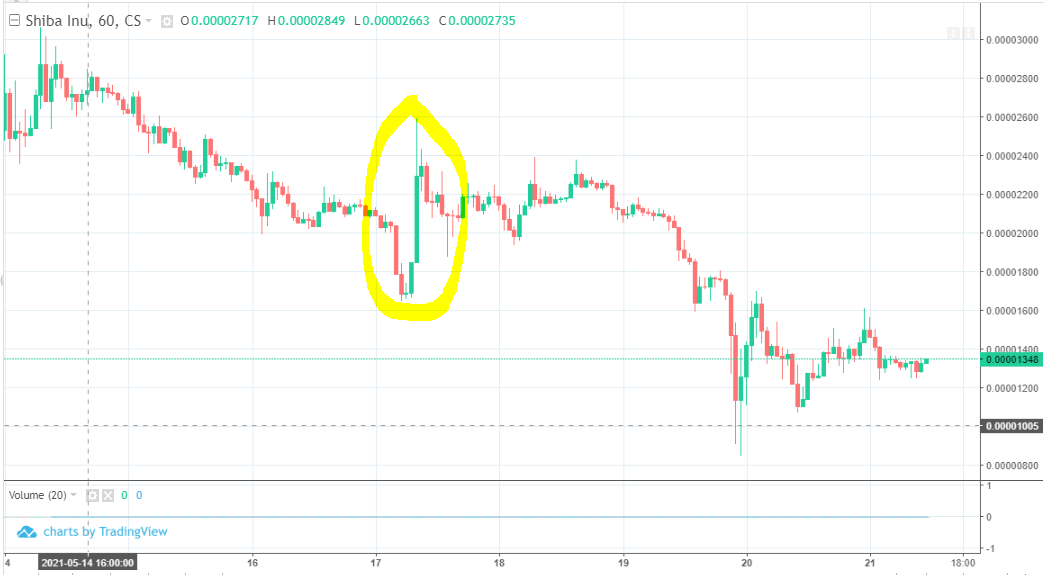If you would like to receive weekly updates like this, sign up here.
Sandeep Nailwal, a cryptocurrency entrepreneur from New Delhi, set up the India Covid Crypto Relief Fund about three weeks ago.
He was inspired to do this after witnessing firsthand COVID related deaths at hospitals through lack of available oxygen.
At first, donations came trickling in, raising roughly $7.5 million up until the middle of last week.
That’s when Vitalik Buterin, one of the creators of the cryptocurrency Ethereum, donated more than 50 trillion — yes, with a T — Shiba Inu coins, (a meta joke about the joke that is Dogecoin).
It has rallied more than 11,000% in the past month, and based on prices late Monday, 50 trillion of it would have been worth almost $2 billion.
On the surface, this is a wonderful story of philanthropy and human generosity to overcome the devastation this virus has caused.
Things are never as they seem, however.
Has the world seen before such a proliferation of coins released in such an unregulated fashion and which almost all are doomed to end very badly?
Does the behavior surrounding them ever been replicated before in financial history?
Let me explain to you what’s happening here using the real estate cycle lens.
In particular, the era of free banking in the US in the 19th century.
And how history has just repeated before our very eyes!
Meme coins and the 1830’s.
Do you know what a meme coin is? It’s a term for any crypto coin that has no use whatsoever except pure speculation. Coins such as Shiba Inu or Dogecoin.
Those in this sphere have another name for them. Shitcoins!
This is what erstwhile crypto entrepreneur and donor Vitalik Buterin used to donate to that Indian COVID fund.
It was a noble gesture and yet it was his first mistake.
Because the issue with two billion dollars’ worth of a meme coin in your trust is: how exactly do you convert it to normal currency to pass on as donations which can obtain vital medical supplies?
Plus, just how long do you think its “value” will hold steady? Once news of this donation hit social media, the price of Shiba Inu fell 50%.
Current holders of this coin were shocked by the news, worried about what effect this would have once the charity began to liquidate such huge holdings.
As Brian Mittendorf, an Ohio State University professor who studies non-profits and the rise of cryptocurrency in charity said.
“A huge challenge here is estimating the value of the gift”.
“If something is stated as being worth $1.5 billion but it can’t be liquidated, then is it really worth that amount?”
Clearly Vitalik was listening because a few days after his donation he decided to do this.
“I’ve decided to burn 90% of the remaining Shiba tokens in my wallet. The remaining 10% will be sent to a (not yet decided) charity with similar values to cryptorelief (preventing large-scale loss of life) but with a more long-term orientation”.
In one fell swoop, 40% of the worldwide circulation of the Shiba Inu coin was removed from the market. That’s 410 trillion coins.
This was his second mistake.
I think the chart tells the story.
I’ve circled the date of the announcement, after a brief jump, the trend resumed its downward spiral.
Ok, enough about the background here. What I want you to focus on today is the behavior.
Can you see now that Buterin is beginning to act like a central bank, attempting to instantly control both liquidity and velocity of this coin.
And as a so-called investor in them, there’s not a damn thing you can do about it.
‘So what?’ you may ask. The world is currently drowning in these meme coins, with now thousands of these in circulation.
What difference does it make if people get burned putting money into a digital joke? And yes, I’d see your point.
But remember this; there is nothing new under the sun.
And fortunately for me, I have Property Sharemarket Economics founder Phillip J Anderson’s book “The Secret Life of Real Estate & Banking” as my ultimate resource to know this.
Incredible as this may sound, we have seen something genuinely like this crypto craze before. You just need to know where to look and identify the same behavior, regardless of how things looked on the surface.
Let’s use Phil’s book and travel way back to the 1830s and the era of free banking in the US.
You won’t believe what I discovered.
This is the future awaiting the crypto market.
We go back to the War between the US and England in 1812.
The First Bank of the United States was the prime lender to the US government to pay for waging war. (Despite its name it was a private bank).
As war continued, this wasn’t enough, so the Second Bank of the United States was formed.
This new bank lasted from 1816 to 1836. Its demise removed a piece of oversight of US banking and opened the way for state banks to usher in the era of free banking.
If you could provide adequate capital, anyone could open a bank and issue their own notes.
Though it didn’t change the overall system. From page 101 of “The Secret Life of Real Estate & Banking”.
“…this did not change the underlying system; bank lending (credit creation) on government granted licenses, based mostly on land value. It was never likely to achieve what it meant to; the elimination of the business cycle and banking panic in the downturn”.
The result was predictable.
Our insatiable need to get something for nothing with someone else’s money meant so many banks were opened printing so many individual notes that guides for note identification were produced.
Counterfeiting was also rife.
At its peak, it was estimated that 30,000 different notes were in circulation!
Do you now see the parallels here?
How many different crypto coins are in circulation today? There is no oversight here, so literally anyone who codes can make their own.
Then start an online community and hope for speculative money to flow in.
And good luck to you trying to assign some sort of intrinsic value to any of them.
But again, we have seen all this before.
Again, from Phil’s book.
“…the Jackson County Bank vault contained boxes with silver coins visible at the top, but further down, colored glass, lead and nails…”
Its reprehensible really, people’s life savings hinging on boxes filled with rubbish as collateral. What do you think you would have received from Jackson County Bank if you asked for your silver back?
Buterin’s actions are NO different. He has acted exactly like these free era banks. Does he have a license to do this? Did he ask consent from other holders about his actions?
He completely cornered a, let’s be frank, pure fabrication of a crypto coin regardless of motive (which were noble) and what’s more can and did get away with it.
Learn your real estate cycle history. Nothing happening now is new to humanity. All that changes are the numbers involved. And what’s more, this same history may shed light on the future of crypto currencies.
The era of free banking in the US was essentially taxed out of existence.
At the climax of the US civil war, the federal government placed a 10% tax on all state bank notes.
This was designed to improve its new national banking system.
Is this the future for crypto? We will have to see.
But when the inevitable end of cycle bust arrives, the US government will, like every cycle before it, look for a fall guy to blame for the economic havoc being unleashed.
That fall guy could be crypto. It most certainly WON’T be the banks.
Do you know why?
If you don’t know, then you need the Boom Bust Bulletin.
It will teach you the history of the 18.6-year real estate cycle, why it repeats and help guide you to the opportunities as they present, all at the right time.
Stop and think to yourself; what will happen if these Shitcoins are used to speculate in real estate?
This could be the beginning of “Dogehomes” or some other meme to describe the trend of buying and selling homes via the use of these crypto coins.
How does this end? Well, as a BBB member you’ll get a front row seat to work out when the time of maximum damage will occur as innovations like Dogecoin spring up and inevitably fall by the wayside.
Join us on this journey, get yourself educated and all for a few cups of coffees a year.
Incredible value.
Best wishes,

Darren J Wilson
and your Property Sharemarket Economics Team
P.S – Find us on Twitter under the username @PropertySharem1
P.S.S – Go to our Facebook Page and follow us for right up to date information on the 18.6-year Real Estate Cycle.



